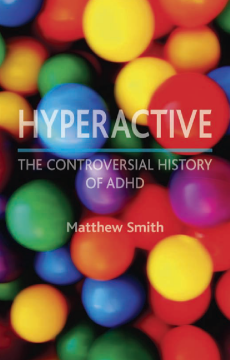
Additional Information
Book Details
Abstract
Each year, doctors diagnose an average of nine percent of children between the ages of five and seventeen with attention deficit hyperactivity disorder, or ADHD. One of the most common childhood disorders, it is also one of the most controversial—since first identified in the late 1950s, everyone from medical professionals to politicians have debated its causes, its treatment, and its implications for children. Today, physicians believe it is an inherited neurological disorder best treated with stimulants.
Hyperactive provides the first history of ADHD, addressing why children were first diagnosed with the disorder, why biological explanations became predominant, how powerful drugs became the preferred treatment, and why alternative explanations have failed to achieve any legitimacy. Contending that hyperactive children are also a product of their social, cultural, and educational environment, Matthew Smith demonstrates how knowledge about the history of ADHD can lead to better choices about its diagnosis and treatment. A revealing and accessible study of this controversial subject, Hyperactive is an essential book for psychologists, teachers, policymakers, and parents.
“Matthew Smith persuasively demonstrates the historical contingency of our ideas about hyperactivity. Well written, complex yet sharply argued, this book is a sorely needed corrective to today’s therapeutic ‘common sense’ and the ocean of pharmaceuticals it sanctions.”
— David Herzberg, University at Buffalo (SUNY)
“As Matthew Smith demonstrates in this excellent study, there is arguably no more contentious childhood condition than hyperactivity or ADHD. Since the term was first introduced in the decades following the Second World War, hyperactivity has been variably explained in terms of genetic constitution, faulty parenting, an inability to cope with the pace and pressure of modern life, and increased sensitivity to food additives. Hyperactive explores debates about the biological, social and cultural contours of a condition that continues to puzzle doctors, frustrate teachers, and destroy families. It will surely be of value not only to historians of medicine, but also to the parents, teachers, psychiatrists and policy-makers involved in the daily struggle to cope with hyperactive children.”
— Mark Jackson, University of Exeter
“Matthew Smith contributes a highly engaging and important historical perspective to the alleged epidemic in hyperactivity. His book is a masterfully written account that challenges us to think critically about how our modern culture has given rise to a sub-population of children with allegedly disruptive behaviours. At the core of this book Smith boldly asks whether such actions deserve to be better treated or simply better understood.”
— Erika Dyck, University of Saskatchewan
“Matthew Smith dramatically presents the tangled history of a highly conflicted topic, perceptively examining pertinent biological, psychological, and social theories, professional authority, and pharmaceutical marketing, in the light of the day-to-day realities faced by schools, physicians, parents, and children labeled as hyperactive. For anyone personally or professionally concerned with ADHD, this book demonstrates how critically important it is for us to understand the issue in its historical context.”
— Rima D. Apple, University of Wisconsin-Madison
“Hyperactive is a well-researched, well-organized, and well-written history of the development of the highly variable perception, understanding, and treatment of attention deficit hyperactivity disorder. Smith provides a logically strong argument for considering ADHD as a highly complex disorder arising from a number of contributing variables. . . . The author’s critical analysis and global view and interpretation—all free of any discernible bias—make his arguments compelling. . . . What makes this work outstanding is its readability and continuity of story line. . . . Essential.”
— Choice
Matthew Smith is a lecturer and Wellcome Trust research fellow at the University of Strathclyde, Glasgow, Scotland.
